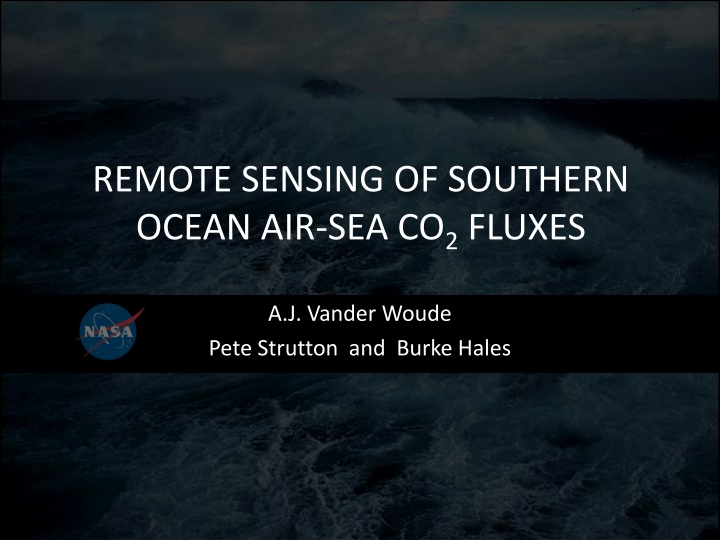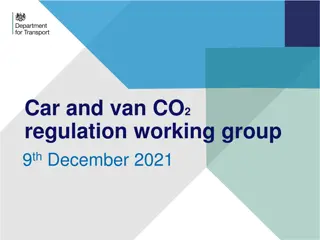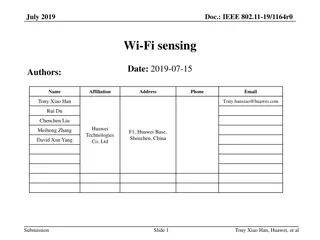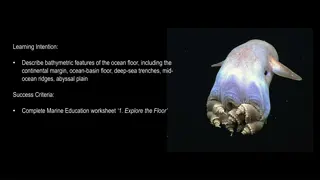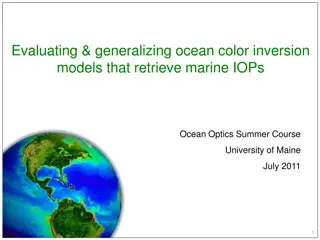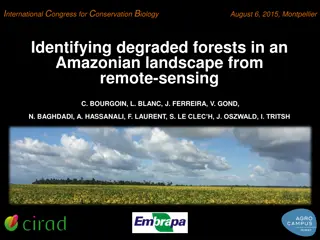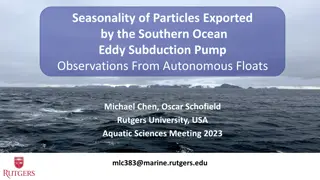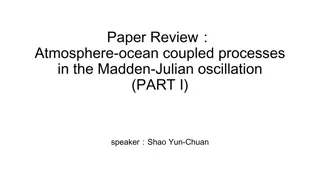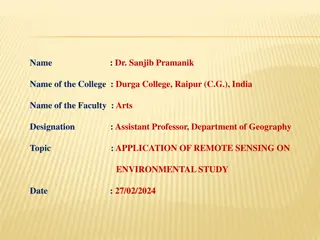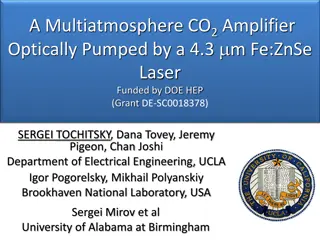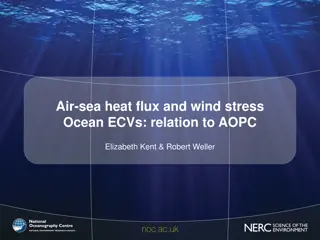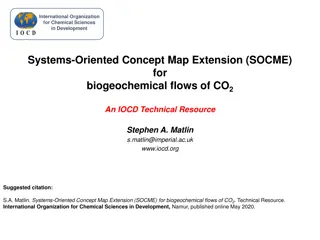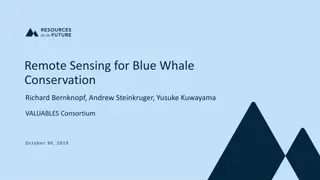Remote Sensing of Southern Ocean CO2 Fluxes
This content explores remote sensing data for understanding CO2 fluxes in the Southern Ocean, highlighting the advantages over traditional observational methods and steps to create predictive satellite algorithms.
Download Presentation

Please find below an Image/Link to download the presentation.
The content on the website is provided AS IS for your information and personal use only. It may not be sold, licensed, or shared on other websites without obtaining consent from the author.If you encounter any issues during the download, it is possible that the publisher has removed the file from their server.
You are allowed to download the files provided on this website for personal or commercial use, subject to the condition that they are used lawfully. All files are the property of their respective owners.
The content on the website is provided AS IS for your information and personal use only. It may not be sold, licensed, or shared on other websites without obtaining consent from the author.
E N D
Presentation Transcript
REMOTE SENSING OF SOUTHERN OCEAN AIR-SEA CO2FLUXES A.J. Vander Woude Pete Strutton and Burke Hales
Global CO2flux Takahashi et al., DSR I, 2009: 4.5 million data points Takahashi et al., DSR I, 2009: 3 million data points
Southern Ocean & atmospheric CO2 Observations versus models Gruber et al. 2009
Why this may be better than observational methods? In some places there are no observations: pCO2 from co-varying parameters is a way forward We can investigate smaller spatial scales: Limited by the resolution of the satellite data (kilometers), not sparse observations (~102 to 103 km) We can investigate seasonal and interannual variability: Links to long term changes in forcing: Southern Ocean winds
Steps to Create Predictive Satellite Algorithms: West Coast Example
Remote Sensing Climatology Monthly Data Chlorophyll a (mg/m3) Sea Surface Height (cm) Sea Surface Height: AVISO Multimission 1999- 2008 Chlorophyll: SeaWiFS 1999-2002, MODIS/Aqua + SeaWiFS Merged 2003-2007, MODIS/Aqua 2007-2008 Wind speed (m/s) OI Reynolds Sea Surface Temperature ( C) Wind speed: QuickSCAT 1999-2008 OI Reynolds SST: AVHRR 1999-2002, AVHRR+AMSR 2002-2008
Steps to Create Predictive Satellite Algorithms
Probablistic Self-Organizing Maps January March February region number There is some correspondence between SOM regions and the fronts Spatial and temporal coherence of the fronts from month to month Longhurst 1998
Overview of Predictive Satellite Algorithms Powell s Optimization A Alkalinity and DIC from the McNeil climatologies Optimizing: Alk, DIC, Ti, Heating/Mixing term, Tcr Chlorophyll term Each has a constant, longitude, latitude & seasonal signal
pCO2 Results & Accuracy of Regional Model Spring Summer Predicted Obo Observed Region 4 May and June pCO2 (ppm) pCO2 (ppm) Red is a source to the atmosphere Autumn Winter White is at atmospheric Blue is a sink, into the ocean pCO2 (ppm) pCO2 (ppm)
Conclusions and future work Satellite algorithms offer a way to fill gaps and better quantify spatial and temporal variability of CO2 Next: -- Finishing the monthly algorithms, by region as well as Seasonal and interannual variability and produce maps of CO2 fluxes for the Southern Ocean -- More rigorous comparison with climatologies and models.
Thank you! NASA for funding for this project Maria Kavanaugh for her help with the PRSOM analysis and Ricardo Letelier s lab use of their PRSOM/HAC code
CDIAC in situ pCO2 Coverage 1.4 million data points in the Southern Ocean, south of 40 S
SO GasEx observations and satellite predictions
SO GasEx observations and McNeil predictions
SO GasEx observations and Takahashi predictions
Southern Ocean & atmospheric CO2 Contemporary sink of: .1 to .5 PgC/yr (circulation models & atm and oceanic inversion models) .5 to .7 PgC/yr (pCO2 measurements, Takahashi et al. 2002) .15 to .65 PgC/yr (empirical estimated pCO2, McNeil et al., 2007) Gruber et al. 2009
